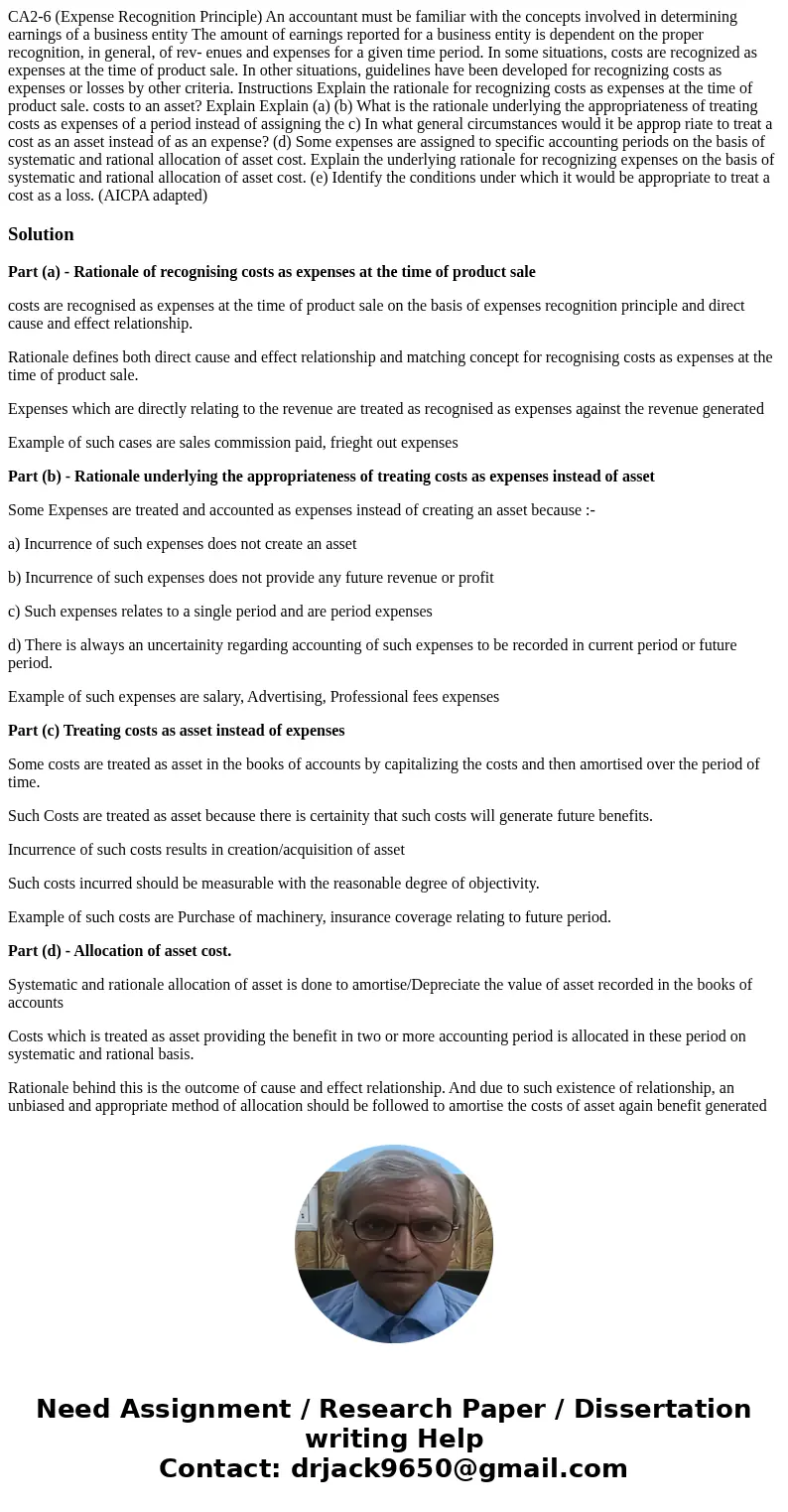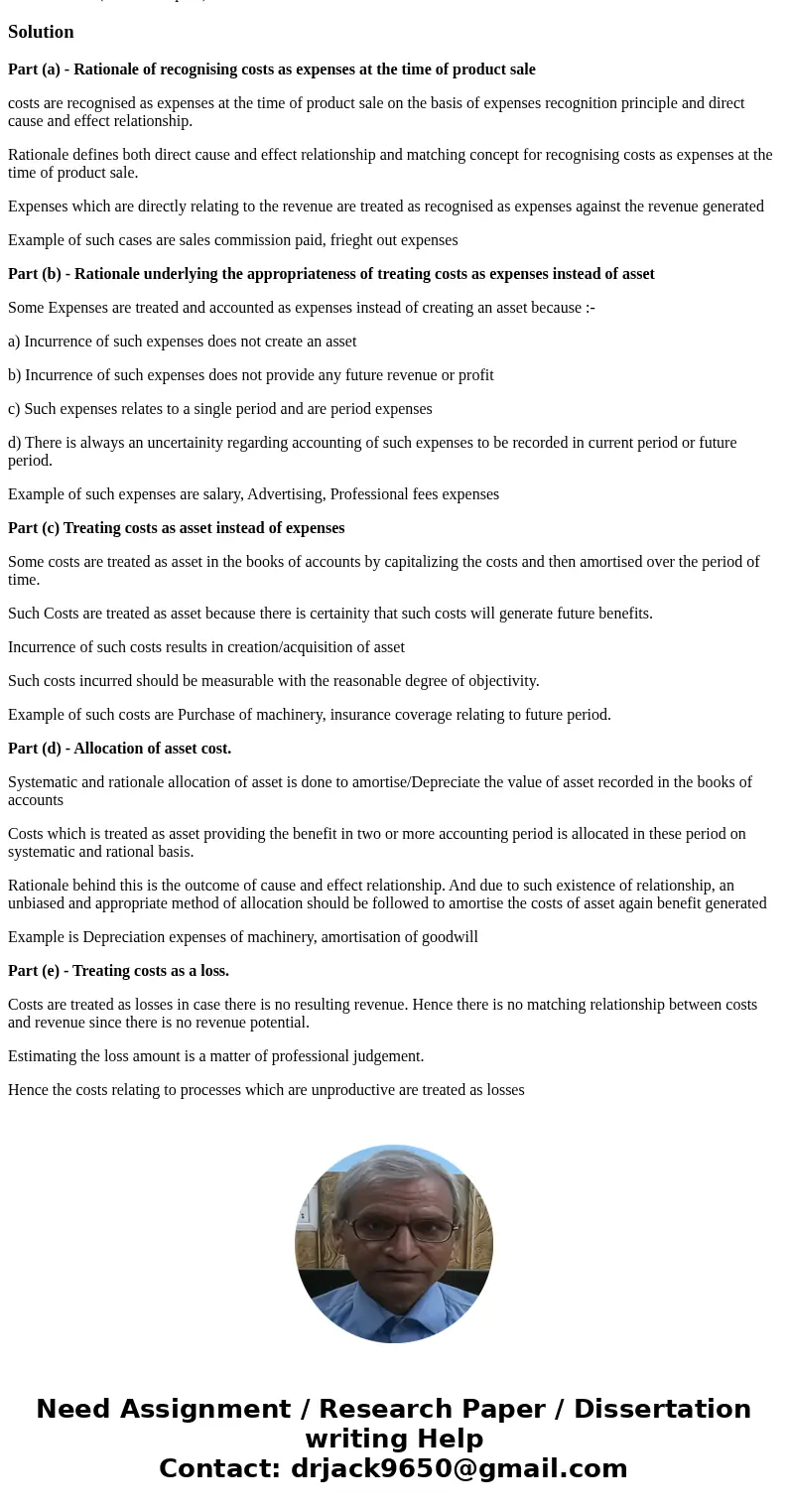CA26 Expense Recognition Principle An accountant must be fam
Solution
Part (a) - Rationale of recognising costs as expenses at the time of product sale
costs are recognised as expenses at the time of product sale on the basis of expenses recognition principle and direct cause and effect relationship.
Rationale defines both direct cause and effect relationship and matching concept for recognising costs as expenses at the time of product sale.
Expenses which are directly relating to the revenue are treated as recognised as expenses against the revenue generated
Example of such cases are sales commission paid, frieght out expenses
Part (b) - Rationale underlying the appropriateness of treating costs as expenses instead of asset
Some Expenses are treated and accounted as expenses instead of creating an asset because :-
a) Incurrence of such expenses does not create an asset
b) Incurrence of such expenses does not provide any future revenue or profit
c) Such expenses relates to a single period and are period expenses
d) There is always an uncertainity regarding accounting of such expenses to be recorded in current period or future period.
Example of such expenses are salary, Advertising, Professional fees expenses
Part (c) Treating costs as asset instead of expenses
Some costs are treated as asset in the books of accounts by capitalizing the costs and then amortised over the period of time.
Such Costs are treated as asset because there is certainity that such costs will generate future benefits.
Incurrence of such costs results in creation/acquisition of asset
Such costs incurred should be measurable with the reasonable degree of objectivity.
Example of such costs are Purchase of machinery, insurance coverage relating to future period.
Part (d) - Allocation of asset cost.
Systematic and rationale allocation of asset is done to amortise/Depreciate the value of asset recorded in the books of accounts
Costs which is treated as asset providing the benefit in two or more accounting period is allocated in these period on systematic and rational basis.
Rationale behind this is the outcome of cause and effect relationship. And due to such existence of relationship, an unbiased and appropriate method of allocation should be followed to amortise the costs of asset again benefit generated
Example is Depreciation expenses of machinery, amortisation of goodwill
Part (e) - Treating costs as a loss.
Costs are treated as losses in case there is no resulting revenue. Hence there is no matching relationship between costs and revenue since there is no revenue potential.
Estimating the loss amount is a matter of professional judgement.
Hence the costs relating to processes which are unproductive are treated as losses


 Homework Sourse
Homework Sourse